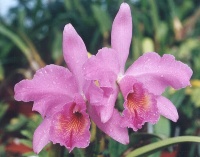Login to edit
An inheritance group references a group of content elements. It extends the functionality of the element group by passing on the content element configuration down the navigation tree.
OpenCms 8.5 Demo Content
Search for content
Page subscription
Most Recent News
Exciting new Acacia variety discovered
Sep 24, 2012
An element group (like this one) allows you to group multiple content elements together and share them on several pages.
Orchids

Orchidaceae, commonly referred to as the Orchid family, is a morphologically diverse and widespread family of monocots in the order Asparagales.
It is currently believed to be the second largest family of flowering plants (only the Asteraceae is larger), with between 21,950 and 26,049 currently accepted species, found in 880 genera. The number of orchid species equals more than twice the number of bird species, and about four times the number of mammal species. It also encompasses about 6–11% of all seed plants. The largest genera are Bulbophyllum (2,000 species), Epidendrum (1,500 species), Dendrobium (1,400 species) and Pleurothallis (1,000 species).
Orchidaceae are cosmopolitan, occurring in almost every habitat apart from glaciers. The great majority are to be found in the tropics, mostly Asia, South America and Central America, but they are also found above the Arctic Circle, in southern Patagonia, and even two species of Nematoceras on Macquarie Island, close to Antarctica.
Orchids are easily distinguished from other plants, as they share some very evident apomorphies. Among these: bilaterally symmetric (zygomorphic), many resupinate, one petal (labellum) is nearly always highly modified, stamens and carpels are fused, and the seeds are extremely small.
This article uses material from the Wikipedia article Orchidaceae and is licensed under the GNU Free Documentation License.


